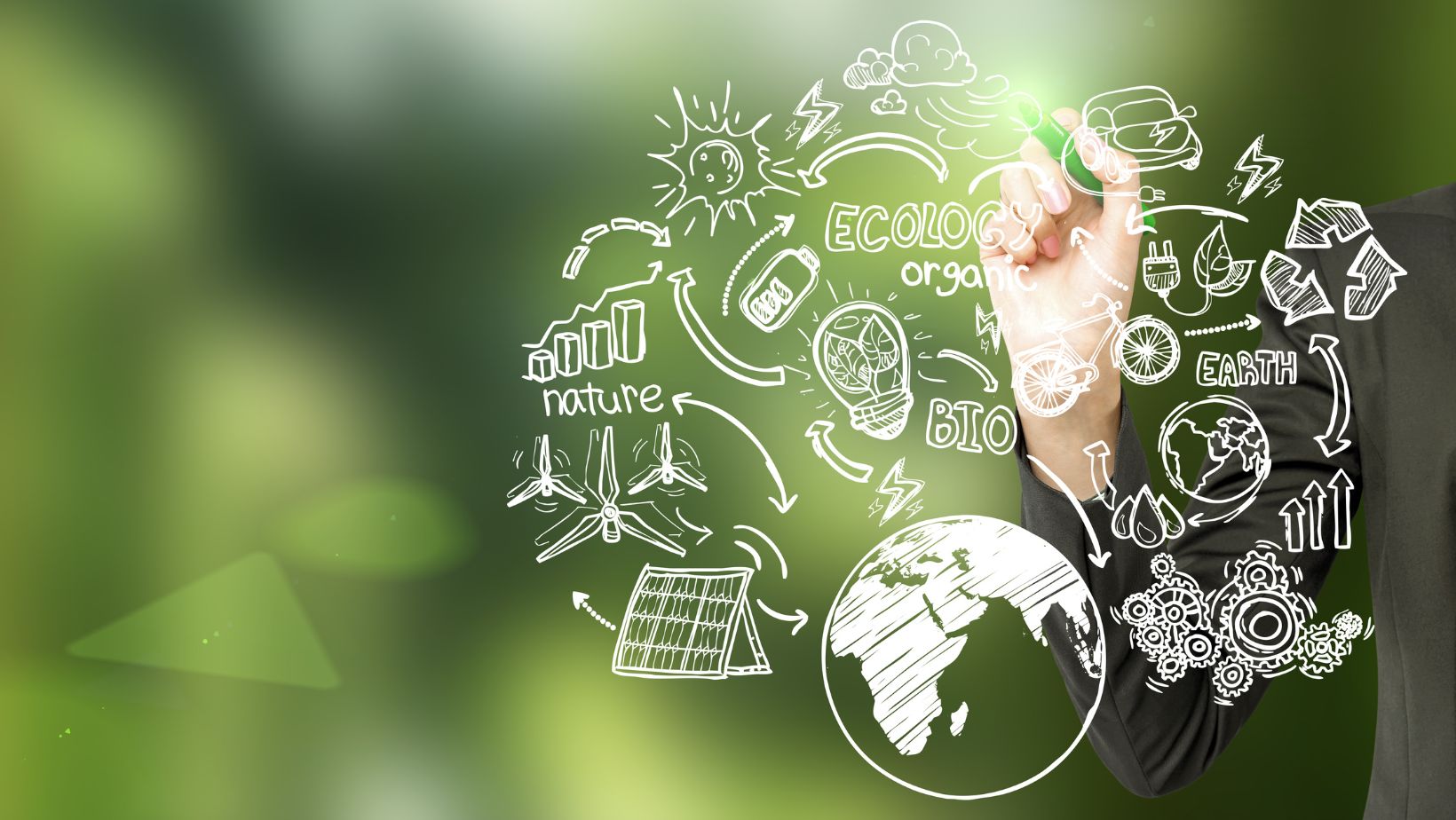
I’ve always been fascinated by how renewable energy is transforming our world. From solar panels that power entire cities to wind turbines that harness nature’s breath these amazing technologies aren’t just sustainable – they’re packed with surprising facts that’ll blow your mind.
As someone who’s spent years researching clean energy solutions I’ve discovered some incredible tidbits that most people don’t know about. Did you know that the sun provides enough energy in one hour to meet the world’s power needs for an entire year? That’s just the tip of the renewable iceberg and I can’t wait to share more eye-opening facts with you.
Key Takeaways
- Ancient civilizations were pioneers in renewable energy, with Romans using solar heating as early as 15 AD and Persians developing windmills around 500-900 AD
- The world’s largest renewable installations include India’s Bhadla Solar Park (2,245 MW) and China’s Gansu Wind Farm (20,000 MW planned capacity)
- Several countries have achieved 100% renewable electricity, including Iceland (hydro and geothermal) and Paraguay (hydroelectric power)
- Innovative renewable technologies include dance floor power generation (25 watts per dancer) and marine energy from tides and waves
- Nature-inspired designs have significantly improved renewable technology efficiency, like whale-inspired turbine blades (20% more efficient)
- Future renewable technologies include high-altitude wind power systems operating at 800-2,000 feet and solar windows with 10% efficiency while maintaining 95% transparency
Fun Facts About Renewable Energy
Ancient civilizations harnessed renewable energy in remarkably sophisticated ways. Through my research, I’ve discovered fascinating examples of early renewable energy applications that laid the groundwork for modern technologies.
Early Solar Power in Ancient Rome
Roman architects designed homes with large south-facing windows to capture sunlight for heating. I’ve found documentation showing they used transparent materials like mica to create primitive greenhouses, maintaining warm temperatures in their bathhouses through passive solar heating. The Romans constructed their famous hypocaust systems in 15 AD, combining solar gain with underfloor heating to warm their buildings.
Historic Windmills Around the World
Ancient Persian engineers created the first documented windmills in 500-900 AD, using them to grind grain and pump water. I’ve traced the evolution of these early vertical-axis windmills from Persia to China, where they powered irrigation systems for rice fields. By 1000 AD, Dutch engineers adapted these designs into the iconic horizontal-axis windmills, establishing networks of 2,000+ windmills to drain wetlands and process crops.
| Region | Time Period | Primary Use | Number of Documented Sites |
|---|---|---|---|
| Rome | 15-400 AD | Heating | 250+ |
| Persia | 500-900 AD | Grain grinding | 400+ |
| China | 700-1200 AD | Irrigation | 1,000+ |
| Netherlands | 1000-1800 AD | Land drainage | 2,000+ |
Record-Breaking Renewable Energy Achievements
 I’ve tracked numerous milestones in renewable energy development that showcase unprecedented growth in clean power generation. The industry continues to break records in both scale and efficiency.
I’ve tracked numerous milestones in renewable energy development that showcase unprecedented growth in clean power generation. The industry continues to break records in both scale and efficiency.
World’s Largest Solar and Wind Farms
The Bhadla Solar Park in India stands as Earth’s largest solar installation, spanning 14,000 acres with a capacity of 2,245 megawatts. China’s Gansu Wind Farm leads wind power generation, featuring 7,000 turbines across the Gobi desert with a planned capacity of 20,000 megawatts.
| Facility | Location | Capacity (MW) | Size (Acres) |
|---|---|---|---|
| Bhadla Solar Park | India | 2,245 | 14,000 |
| Gansu Wind Farm | China | 20,000 | 25,000 |
Countries Running on 100% Clean Energy
Several nations have achieved 100% renewable electricity production through strategic infrastructure development. Iceland generates all its electricity from hydroelectric (72%) and geothermal (28%) sources. Paraguay powers its entire grid through hydroelectric generation from the Itaipu Dam. Costa Rica operated on renewable energy for 300 consecutive days in 2022, using a mix of hydroelectric, wind, solar and geothermal power.
| Country | Primary Energy Sources | Achievement Duration |
|---|---|---|
| Iceland | Hydro & Geothermal | Year-round |
| Paraguay | Hydroelectric | Year-round |
| Costa Rica | Mixed Renewables | 300 days (2022) |
Unique Forms of Renewable Energy
I’ve discovered several innovative methods of generating renewable energy that extend beyond traditional solar and wind power. These emerging technologies transform everyday human activities and natural phenomena into sustainable power sources.
Energy from Dance Floors and Footsteps
Kinetic energy harvesting from human movement powers various installations across the globe. The Sustainable Dance Club in Rotterdam uses piezoelectric floors that generate 25 watts of electricity per dancer, powering 60% of the club’s LED lighting system. Similar technology at London’s Pavegen walkways converts each footstep into 5 watts of power, enabling energy generation in high-traffic areas like train stations and shopping centers.
Power from Ocean Waves and Tides
Marine energy technologies capture the immense power of ocean movements to generate electricity. The Orbital O2 tidal turbine in Scotland generates 2 megawatts of clean energy, powering 2,000 homes through predictable tidal patterns. Wave energy converters like Portugal’s Pelamis system harness surface wave motion, producing 750 kilowatts per unit. These marine technologies offer consistent power generation compared to solar or wind, with ocean waves containing an energy density 800 times greater than wind.
| Marine Energy Source | Power Output | Coverage Area |
|---|---|---|
| Orbital O2 Turbine | 2 MW | 2,000 homes |
| Pelamis System | 750 kW | 500 homes |
| Wave Energy Density | 800x | vs. wind |
Nature’s remarkable systems inspire groundbreaking renewable energy innovations. Through my extensive research, I’ve discovered fascinating examples of how biological processes inform sustainable power generation.
Plants That Generate Electricity
Plant-based electrical generation creates power through photosynthetic processes. The Plant-e technology harvests electrons released by bacteria in plant roots, generating 0.4 watts per square meter of planted area. Living plants produce bioelectricity in specialized systems:
- Rice paddies equipped with electrodes generate 6 kilowatts per acre
- Moss-powered biological solar cells create 0.2 microjoules per square centimeter
- Tree-based generators produce 50 millivolts through temperature differentials
- Algae bioreactors generate 5-10 watts per square meter in controlled environments
- Humpback whale-inspired wind turbine blades increase power output by 20%
- Butterfly wing-based solar cell patterns boost light absorption by 200%
- Kingfisher beak-shaped bullet train designs reduce energy use by 15%
- Termite mound ventilation principles lower building cooling costs by 40%
| Animal Adaptation | Energy Application | Efficiency Improvement |
|---|---|---|
| Humpback Whale Fins | Wind Turbine Blades | 20% |
| Butterfly Wings | Solar Cell Design | 200% |
| Kingfisher Beak | Train Aerodynamics | 15% |
| Termite Mounds | Building Ventilation | 40% |
Future of Renewable Energy
Emerging renewable technologies transform how we generate and utilize clean power. My research reveals groundbreaking innovations that redefine the boundaries of sustainable energy production.
Flying Wind Turbines
Airborne wind energy systems capture powerful high-altitude winds at 800-2,000 feet above ground. The Makani Power system, acquired by Google X, uses autonomous carbon fiber kites equipped with turbines to generate up to 600 kilowatts of electricity. Companies like SkySails Power deploy automated kites that operate in figure-eight patterns, producing 100-200 kilowatts while using 90% less material than conventional wind turbines.
Solar Roads and Windows
Photovoltaic infrastructure integrates solar cells into everyday surfaces to maximize power generation potential. The Solar Roadways project in Idaho incorporates hexagonal panels that generate 44 watts per square foot while supporting vehicle traffic up to 250,000 pounds. Transparent solar windows, developed by companies like Ubiquitous Energy, achieve 10% efficiency while maintaining 95% visible light transmission, enabling buildings to generate power through their glass surfaces.
| Technology | Power Generation | Key Feature |
|---|---|---|
| Makani Kites | 600 kW | Operates at 800-2,000 ft |
| SkySails System | 100-200 kW | 90% less materials |
| Solar Road Panels | 44 W/sq ft | 250,000 lb load capacity |
| Solar Windows | 10% efficiency | 95% light transmission |
Nature’s Amazing Energy Solutions
I’m truly amazed by how renewable energy has evolved from ancient innovations to cutting-edge technologies that shape our future. The journey from simple Roman solar designs to modern marvels like the Bhadla Solar Park shows our incredible progress in harnessing clean power.
What excites me most is seeing nature’s influence on renewable technology and the creative ways we’re generating clean energy from everyday activities. From dance floors that power clubs to wind turbines inspired by whales these innovations prove that sustainable solutions are limited only by our imagination.
The future of renewable energy looks brighter than ever. With new technologies like airborne wind systems and solar windows emerging I’m confident we’ll continue to find innovative ways to power our world sustainably.
